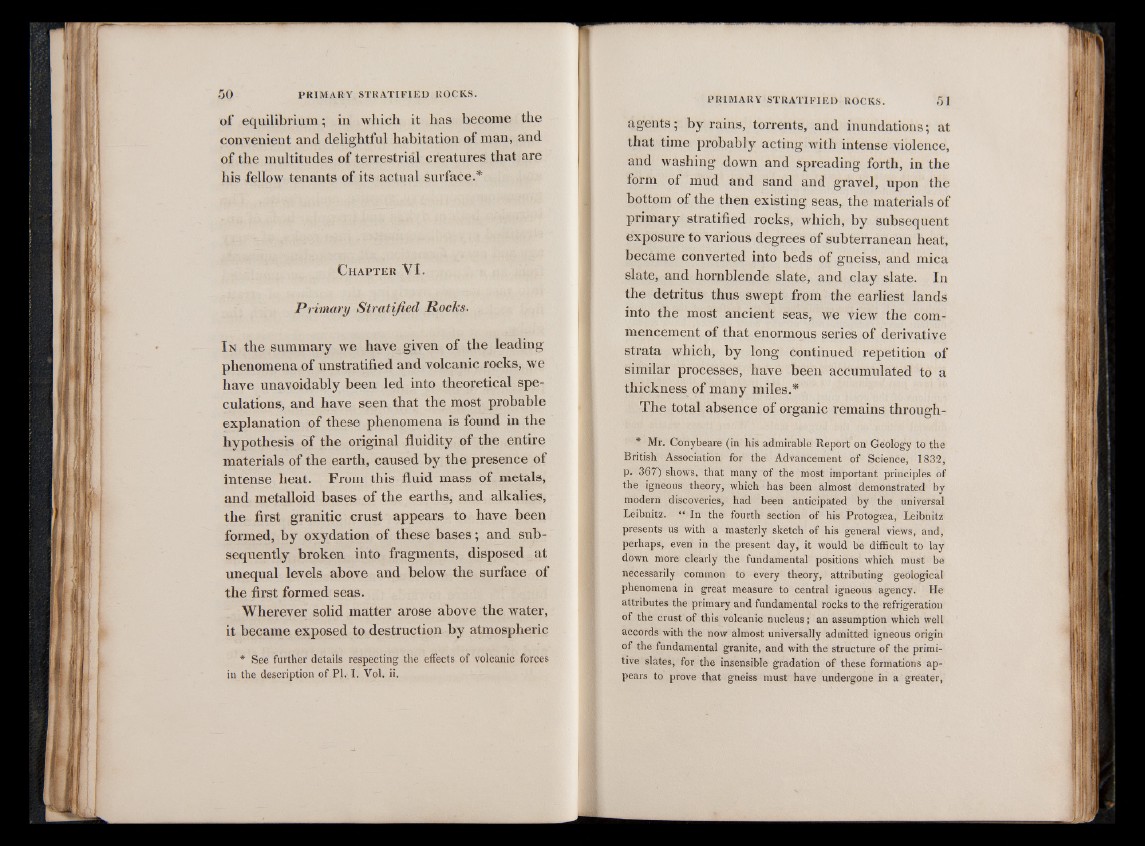
of equilibrium; in which it has become the
convenient and delightful habitation of man, and
of the multitudes of terrestrial creatures that are
his fellow tenants of its actual surface.*
Chapter VI.
Primary Stratified Rocks.
In the summary we have given of the leading
phenomena of unstratified and volcanic rocks, we
have unavoidably been led into theoretical speculations,
and have seen that the most probable
explanation of these phenomena is found in the
hypothesis of the original fluidity of the entire
materials of the earth, caused by the presence of
intense heat. From this fluid mass of metals,
and metalloid bases of the earths, and alkalies,
the first granitic crust appears to have been
formed, by oxydation of these bases; and subsequently
broken into fragments, disposed at
unequal levels above and below the surface of
the first formed seas.
Wherever solid matter arose above the water,
it became exposed to destruction by atmospheric
* See further details respecting the effects of volcanic forces
in the description of PI. I. Vol. ii.
agents; by rains, torrents, and inundations; at
that time probably acting with intense violence,
and washing down and spreading forth, in the
form of mud and sand and gravel, upon the
bottom of the then existing seas, the materials of
primary stratified rocks, which, by subsequent
exposure to various degrees of subterranean heat,
became converted into beds of gneiss, and mica
slate, and hornblende slate, and clay slate. In
the detritus thus swept from the earliest lands
into the most ancient seas, we view the commencement
of that enormous series of derivative
strata which, by long continued repetition of
similar processes, have been accumulated to a
thickness of many miles.*
The total absence of organic remains through-
* Mr. Conybeare (in his admirable Report on Geology to the
British Association for the Advancement of Science, 1832,
p. 367) shows, that many of the most important principles of
the igneous theory, which has been almost demonstrated by
modern discoveries, had been anticipated by the universal
Leibnitz. “ In the fourth section of his Protogaea, Leibnitz
presents us with a masterly sketch of his general views, and,
perhaps, even in the present day, it would be difficult to lay
down more clearly the fundamental positions which must be
necessarily common to every theory, attributing geological
phenomena in great measure to central igneous agency. He
attributes the primary and fundamental rocks to the refrigeration
of the crust of this volcanic nucleus; an assumption which well
accords with the now almost universally admitted igneous origin
of the fundamental granite, and with the structure of the primitive
slates, for the insensible gradation of these formations appears
to prove that gneiss must have undergone in a greater,